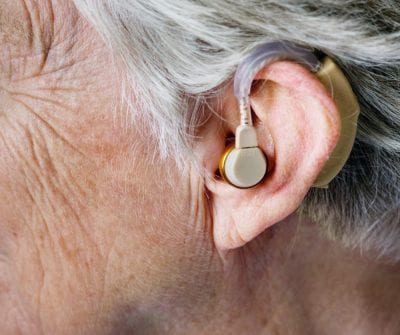Aesthetic and accessibility are often thought of as opposites when talking about website design and development. A common train of thought is that you can’t have a decent looking website while also including all the features necessary to allow people with certain disabilities to navigate the site ie. Problems with sight, hearing, or motor abilities.
Despite what it may seem, adding accessibility to your website doesn’t have to take away from the general aesthetic of it. In fact, there are many accessibility options that aren’t very noticeable at all unless you go out of your way to look for them.
-Adding captions to videos helps users who are hard of hearing
-Supporting text enlargement when a user zooms in on a part of the page to read the text better
-adding support for users to navigate your website with only using a keyboard as well as visual focus cues (outlining the current selection)
-Adding images to complement important information is always better than having a wall of text
-Making hyperlinks keywords instead of just having the URL on the page makes it easier for users who have text to speech web readers
-Even just fixing the contrast of the colors on your site to something easy on the eyes is good for everybody and not just those with sight issues
Having clean, organized, code that follows accessibility standards is also good for future development of your website. “Future proof” is a term thrown around in web development because web development changes so quickly and sometimes so drastically that not thinking two steps ahead could mean big problems down the road. Not to mention, if you have any sort of fluctuation with bringing in new employees, then having clean code can prevent confusion and make it easier for them to come in and start working on the code without having to spend time deciphering what it does.
On the legal side of things, while the U.S. Government hasn’t had the most up-to-date legislation on the matter, The World Wide Web Consortium, a tech standards organization in Cambridge Massachusetts, recently published their new Web Content Accessibility Guidelines (WCAG) version 2.1 which has added a bunch of features that have come from technology emerging in the last decade. Since version 2.0 went live back in 2008 WCAG became the standard for web accessibility with federal agency websites even adopting them as such, but being a decade old, W3C came out with version 2.1 last June with new requirements including providing dynamic orientation for your webpage, tweaking the spacing between text, alerting users to page timeouts, only having animations where absolutely necessary, and more. You can check out the new changes here on W3C’s website. While the government is still resting on web accessibility, it would be safe to say that any new standards that come in the future would most likely parallel the WCAG.
A lot of businesses don’t want to take the time and effort to optimize their web pages, and not only might they be cutting out a portion of their customers but they may be creating problems for themselves as well by forcing the people who aren’t scared away by their site to go through other means to get what they need from the company. If your company does this, it could lead to piles of misplaced emails, unnecessary phone calls, and even people showing up at the office themselves to deal directly with the company, all because the website was too frustrating to navigate. Ease of use should trump ease of development in any case, and there are even many cases where it would be easier to have a system in place that would help out people with specific disabilities because it could very well help you and your site in the long run.
With over 15 years of developing and optimizing the needs of our clients, our team of user experience specialists makes sure that every client has a website that is beautiful and intuitive while also remaining user-friendly.
